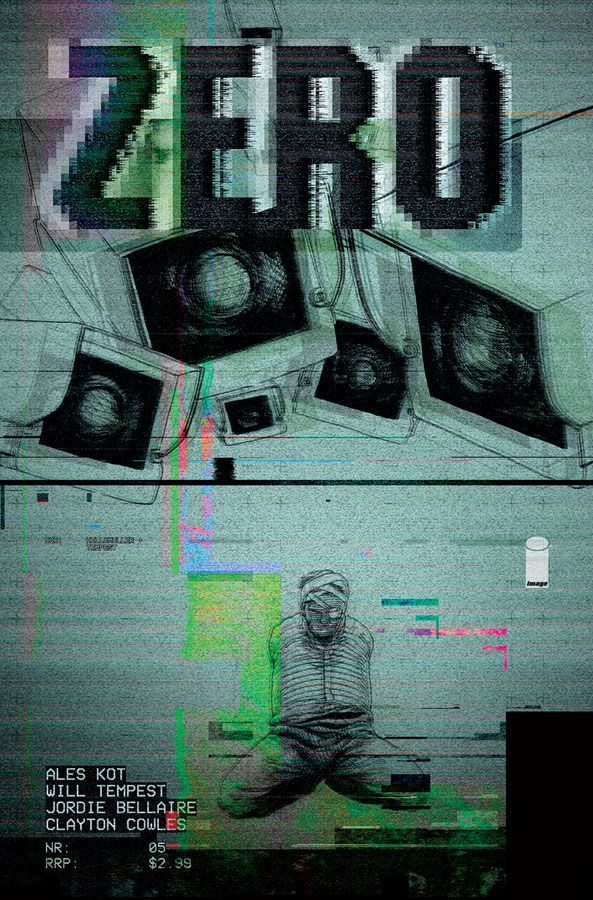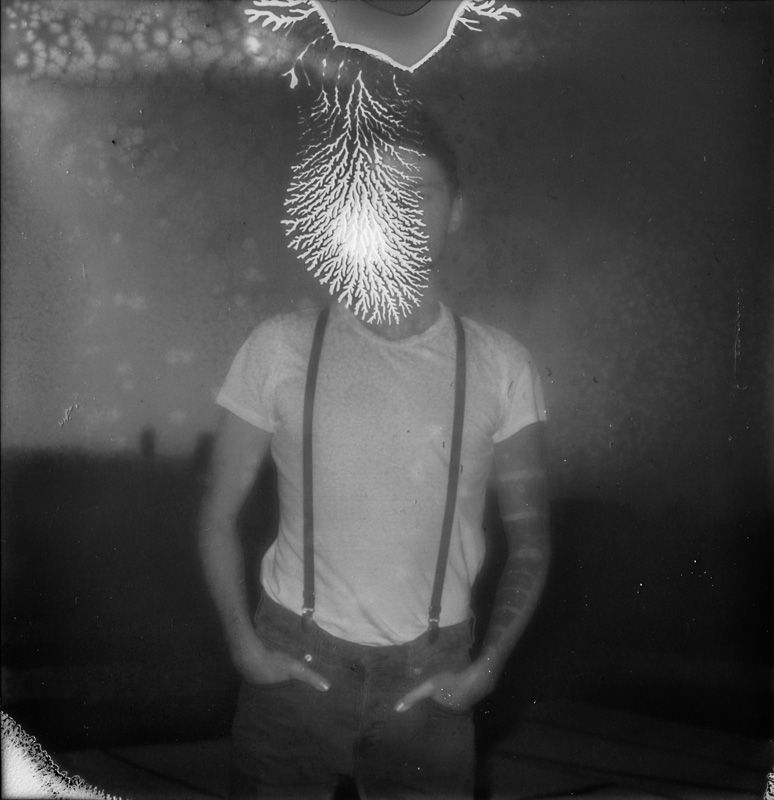When I set out to conduct an interview, particularly when it's focused on one project, I usually expect the conversation to go in a certain direction. I concede that this Q&A with Zero writer Ales Kot surprised me in its ability to venture into a variety of topics, including genetic memory, synchronicity and the importance of honesty in branding.
Zero #5 goes on sale Jan. 22, followed Feb. 19 by the release of the first trade paperback.
Tim O'Shea: How early in the development of Zero did you realize you wanted to use a variety of artists?
Ales Kot: Pretty much right in the beginning, if I remember correctly. The choice was a storytelling decision and a way to work with many artists I am interested in at the same time. I believe a narrative doesn't have to be conventional in the way it is depicted (i.e. one artist for the story) in order to achieve clear communication of itself. Clearly I am right but really how hard is that to figure out? People who read comics are smart and wonderful and hungry for new stories and new ways of telling them. We live in a world that carries easiness of sensory overload within itself and our encounters with said sensory overload can teach us how to modulate/expand our perceptions. We are mutants. My approach to Zero is that of acknowledging and embracing evolution as a gift. That is one of the reasons why a variety of artists is correct here. Another reason would be because I simply felt like it.
In this CBR nterview, you mention how your grandfather had an influential impact on Zero to a certain extent. Do you care to elaborate upon that?
My grandfather is a complex man. Then again, so is everyone. I am still uncovering his life. As a very young man he lost two key people during World War II, then he started a militia, spent a few years in prison, mostly in uranium mines, worked in a steel factory, became a special ops military man, became a truck driver, and so on ... A massive reveal that helped me understand – don't mistake that with “agree with” – a lot of his subsequent life choices came when I understood that he lost his father and a girl he was in love with before he even turned 11, both during WWII. Understanding genetic memory as something that is transferred through all of us, through generations, helped me make sense of my own heritage, of some visions from WWII that were inexplicably (at first) haunting me, and of other members of my family, of cycles that can go on unless someone decides to understand them and then chooses to change them.
How much political research did you do for Zero in order to make your predictions more engaging while still unique?
My research never stops. The world is political; everything is political. I am speaking of “body of citizens,” the original meaning of the world “polis.” Anything that speaks to me can be filed away for later use. I do not subscribe to the artistic practice of stories that are perfectly conceived and outlined and then stay rigid as one writes them page by page. I invite chaos and synchronicity and I invite order as well.
As for predictions, I don't make any.
In Issue 2, there is a scene with kids hanging upside down from a tree. The POV changed to have the characters hanging upside down while talking. Was that at your suggestion or was that Tradd Moore's?
Mine. It felt natural. The Hanged Man motif. If I didn't suggest it, I believe Tradd would suggest something similar.
We posted the entire script online, for free. It can be downloaded here.
As for the specific page:
PAGE 6
Zero and Mina are hanging off a tree branch, holding themselves only with their feet. The imagery is consciously resonating with the Hanged Man tarot card.
Zero is making a face with his face and hands.
ZERO: WHO AM I?
Mina is looking at him, trying real hard not to laugh.
MINA: A MOOSE.
Zero keeps on making the face. Lips sealed tight so he doesn't burst out laughing himself. It's a lovely moment; a true meeting of souls, and this is far from their first time.
ZERO: NOPE.
She gives up a bit, starts smiling, and it's the kind of smile that is just an unfolding of a much bigger one...
MINA: BUT THE EARS...
Zero smiles a bit, too, mirroring Mina without even realizing it.
ZERO: YOU KNOW.
Mina is thinking really hard about this.
MINA: UM...
Zero gives her a hint.
ZERO: YOU SEE HER EVERY DAY.
Mina just realized the answer. Her eyes grow bigger. She's happy with herself and she can hardly believe Zero is really making fun of their teacher.
MINA: ...MISS MURRAY?
Zero grins. The answer is clear.
Mina grins too. They are mirroring one another.
MINA: YOU'RE AN ASSHOLE.
Silhouettes of Mina and Zero and the tree.
MINA: THE EARS ARE NOT HER FAULT, YOU KNOW.
Zizek's word balloons are like no one else in the series. What was the thinking on that element?
A different voice; an older voice; a broken-down voice, in a certain sense. A voice affected by some illness.
Issue 2 is dedicated to Garth Ennis. Any idea if he has read it, or what his reaction is to the issue?
No idea. I would love to know. I hope he loved the thing. I consider Garth Ennis one of the key humanist writers in comics and a huge influence on my life and on my writing.
The covers to Zero are unlike any other series I have seen recently, what kind of branding are you aiming to achieve with that look?
Fuck branding. I wanted to find and communicate the truth of the matter. The truth brands itself the best, and if I am aware of its beauty and complexity, I can show it all accordingly. Is that branding? If so, then fuck “branding” that brands by willingly reducing the totality of what a thing is in exchange for profit, fuck “branding” that thinks about “target audience,” fuck dishonesty. I embrace the type of branding that comes from dedication to – and understanding of – the creation itself. Everything else is noise.
The covers and the interior design are the work of the artists and Tom Muller, our chief designer. I occasionally say a thing, but I mostly do the thing I can do because I choose my collaborators based on my love of their work and mutual respect: I let them create freely, trusting their abilities.
In Issue 3 you had a character use the phrase "Kickstarter for terrorists." Is that an idea you had in the back of your head for awhile? If so, how hard was it not to use it before Issue 3?
This came from Shlok Vaidya, a friend of mine. He is a writer, a defense consultant and a terrorism analyst. I wholeheartedly recommend his book, Rise of Siri, which is one of the most engaging and thought-provoking SF novellas I read in the past five years. I asked him if I could use the idea, Shlok said yes, that was it.
And it wasn't hard at all. I listen to the story. It tells me what comes when.
How critical was it to you to have Jordie Bellaire on the creative team as colorist? I have to say, 35 percent to 40 percent of the series appeal to me is her coloring choices.
In the beginning Jordie simply felt like the correct choice. I wasn't able to explain it to myself beyond liking her work and knowing that her work ethic is strong. Now I know that this is merely our first collaboration (apart from the covers of Change Jordie colored before Zero), we are becoming great friends, and the comic is what it is because each member of our team, including Jordie, is doing some of their career-best work.
Each issue has text pieces as part of the back-end matter. What kind of material do you intend to feature there?
Anything that feels right. Issue #4 had a link to a free Death Grips album and a prose piece that explored lives of Garreth Carlyle and Roman Zizek. Issue 5 will have nothing because it's 29 pages of comics storytelling. Zero #6 will likely have some sort of a manifesto and maybe a few interrogation files. And so on. The focus is on always adding work that enhances the scope of the story. Every page of Zero is the story, and that includes its cover, back cover and everything between them.
In February the first trade collection comes out. Are there are any bonus material you'd like to tease that might appear?
All the back matter from the single issues, cover gallery, new chapter breaks, more. Our chief designer Tom Muller is having a field day with the collection. My focus is to make comics I would buy with my own money, to make comics I would read -- with joy -- more than once, to make comics that will be aesthetic objects that are completely thought out and put together with care and precision, with intelligence and empathy. My focus is to make comics that will change me, comics that will communicate something that is alive inside me. Zero is achieving all of the above.



